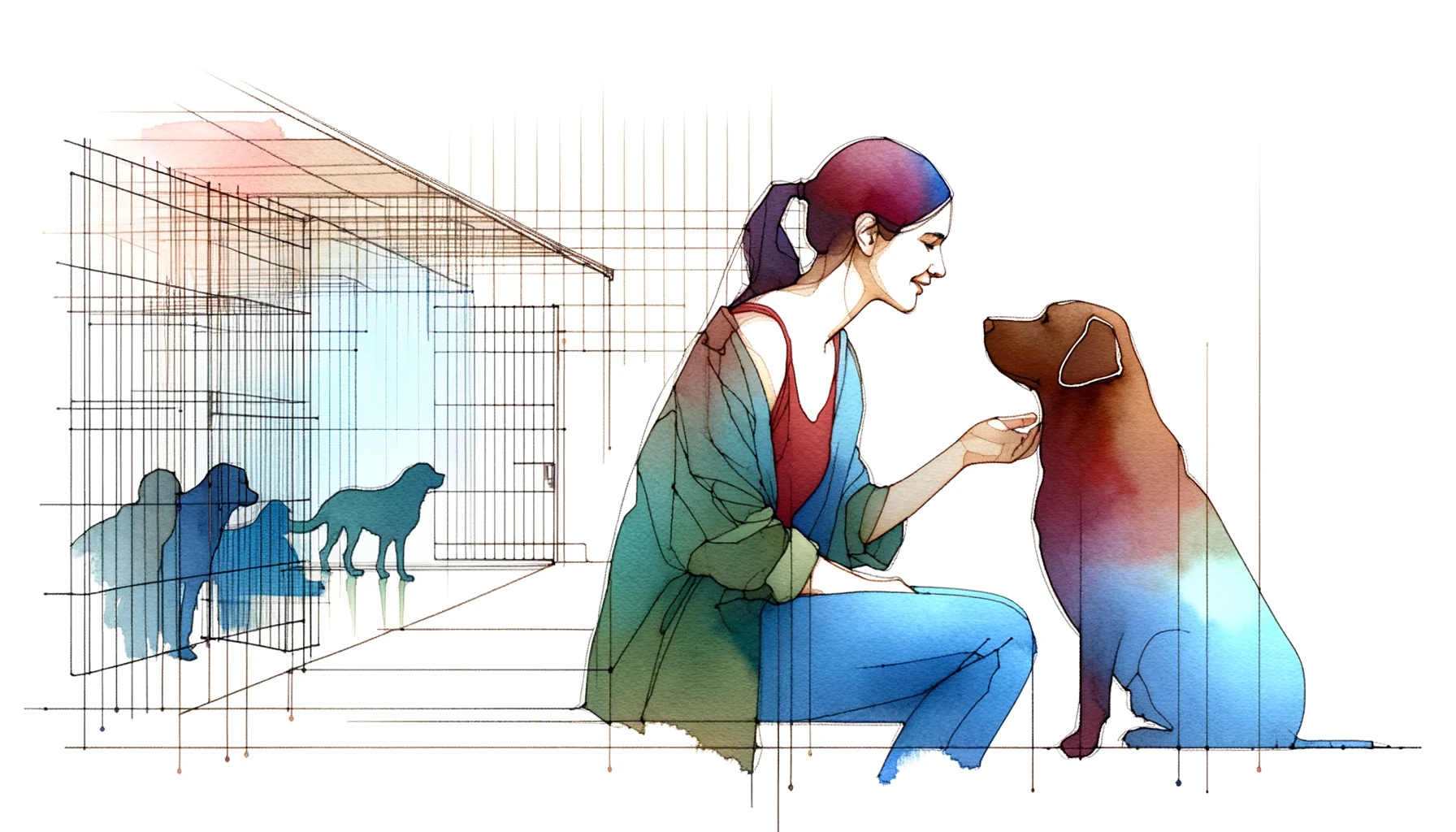Introduction to Rescue Dog Adoption
Adopting a rescue dog is a journey filled with love, responsibility, and rewarding experiences. It’s about giving a second chance to a dog that may have had a difficult past.
This process is not just about finding a new pet; it’s about saving a life and making a lifelong friend.
For a deeper understanding and inspiration, read these True Life Stories of Dog Rescues. These narratives showcase the incredible journeys of dogs who found their forever homes and the heartwarming impact they’ve made on their adopters’ lives.
1) Why Adopt, Not Shop?
By choosing adoption, you’re not only giving a home to a dog in need but you’re also helping to reduce the demand for commercially bred puppies.
Adoption is a stand against the often inhumane conditions of puppy mills and contributes to the welfare of all dogs.
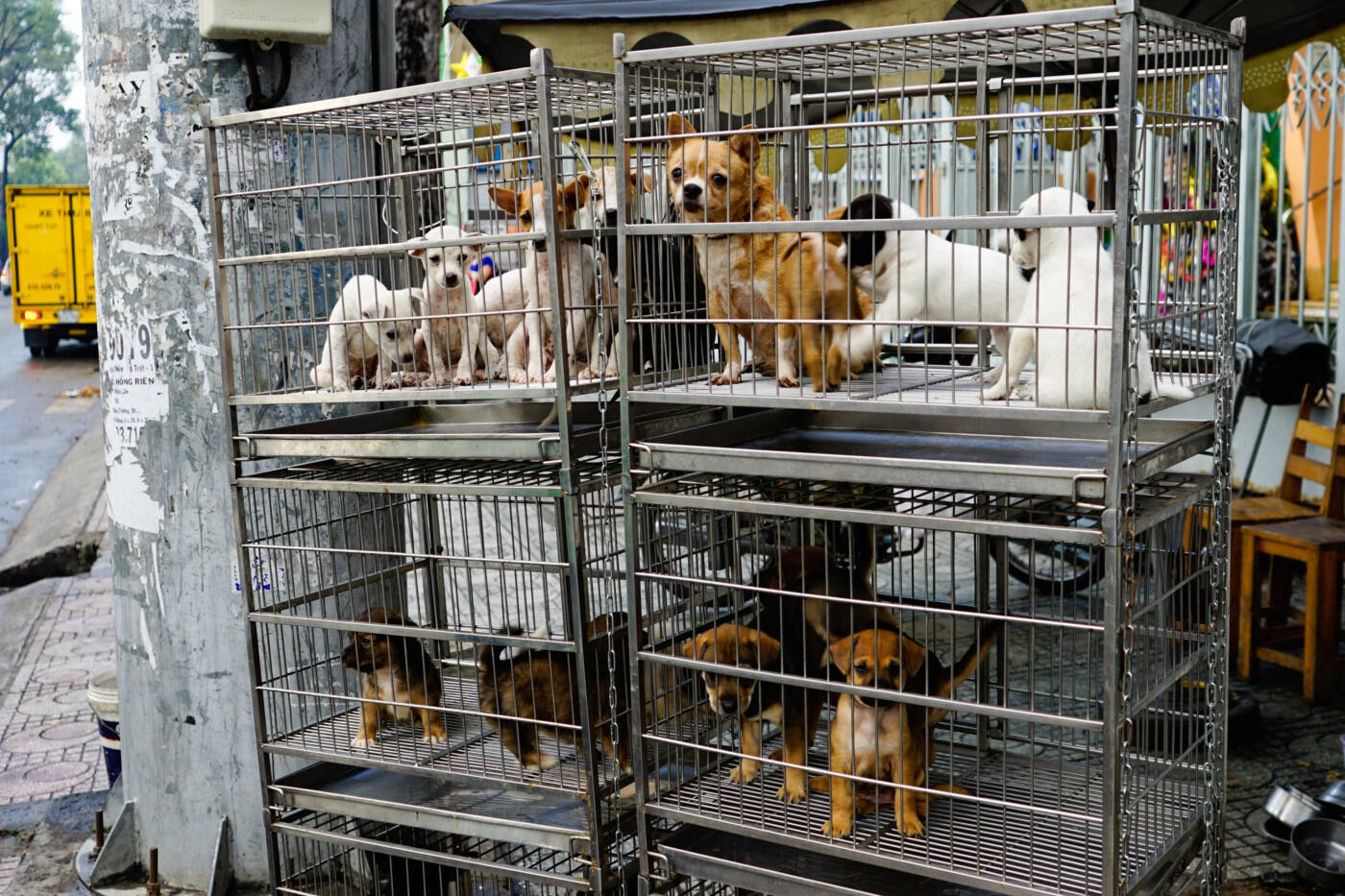
2) Dispelling Myths
It’s important to address some common misconceptions about rescue dogs.
Many believe that rescue dogs are damaged or problematic, but this just isn’t the case.
While some rescue dogs might have experienced trauma or neglect, with proper care and love, they can become loving and loyal companions.
Remember, a dog’s past does not define its future.
In this comprehensive guide, we’ll explore the steps and considerations involved in adopting a rescue dog.
We’ll go from assessing your readiness to building a lifelong bond, and provide you with all the information you need to make this compassionate and life-changing decision.
Key Takeaways:
- Myth: Rescue dogs are always problematic.
- Truth: Many are loving and adjust well with care.
- Myth: You can’t find purebreds in shelters.
- Truth: Shelters have a wide range of breeds, including purebreds.
So now we’ve established why you should rescue, let’s embark on this rewarding journey together!
Are You Ready for a Rescue Dog?
Adopting a rescue dog is a significant commitment that extends beyond the initial joy of bringing a new pet home.
It’s essential to evaluate your readiness on several fronts before taking this step.
Here is a PDF Download that can help you assess if you’re ready for a rescue: Rescue Readiness Checklist.
1) Understanding the Commitment
Owning a dog is a long-term commitment, often spanning over a decade. It requires time, patience, and a stable lifestyle.
Consider whether you’re prepared for the daily responsibilities, including walking, feeding, grooming, and training, which are integral to a dog’s well-being.
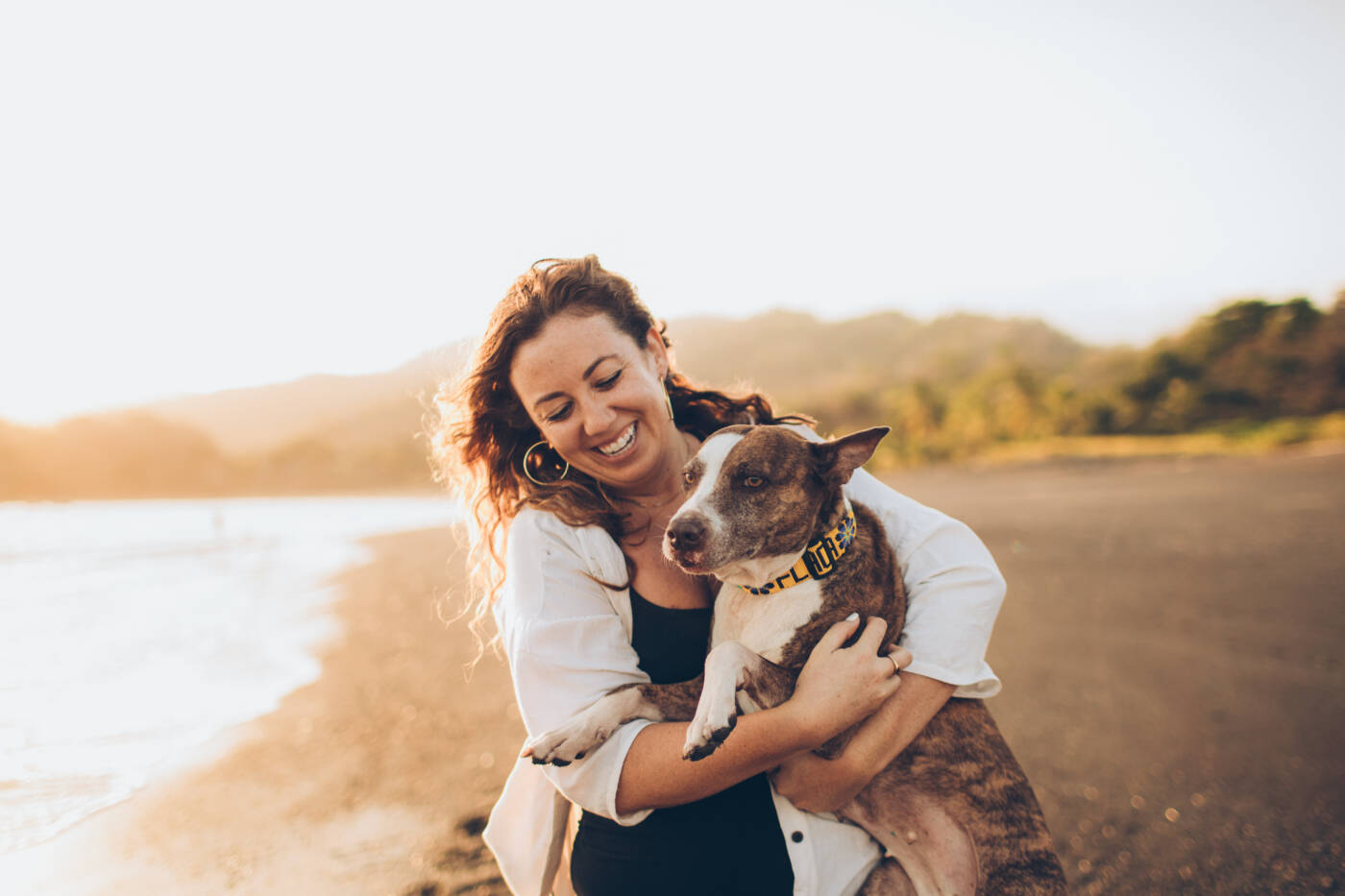
2) Lifestyle and Environment
Your living environment plays a critical role in your readiness.
- Do you have enough space for a dog to live comfortably?
- Are there any restrictions on pet ownership in your housing?
- Assess your lifestyle – if you travel frequently or have a hectic work schedule, how will a dog would fit into this?
3) Financial Considerations
The financial aspect of dog ownership is often underestimated.
Beyond the adoption fee, there are ongoing costs like food, grooming, veterinary care, and emergency medical expenses.
It’s crucial to be financially prepared for both everyday expenses and unforeseen ones.
4) Emotional Preparedness
Lastly, assess your emotional readiness.
Are you prepared to handle the challenges that come with a new pet, especially a rescue that may need extra care and patience?
Understanding that the transition can be demanding emotionally is key to creating a nurturing environment for your new companion.
Key Takeaways:
- Understand the time and patience required for a adopting a shelter dog.
- Know the financial responsibility (food, vet, grooming).
- Test your lifestyle suitability (travel, work hours).
Now with all that out of the way, let’s look into how best to choose a rescue dog!
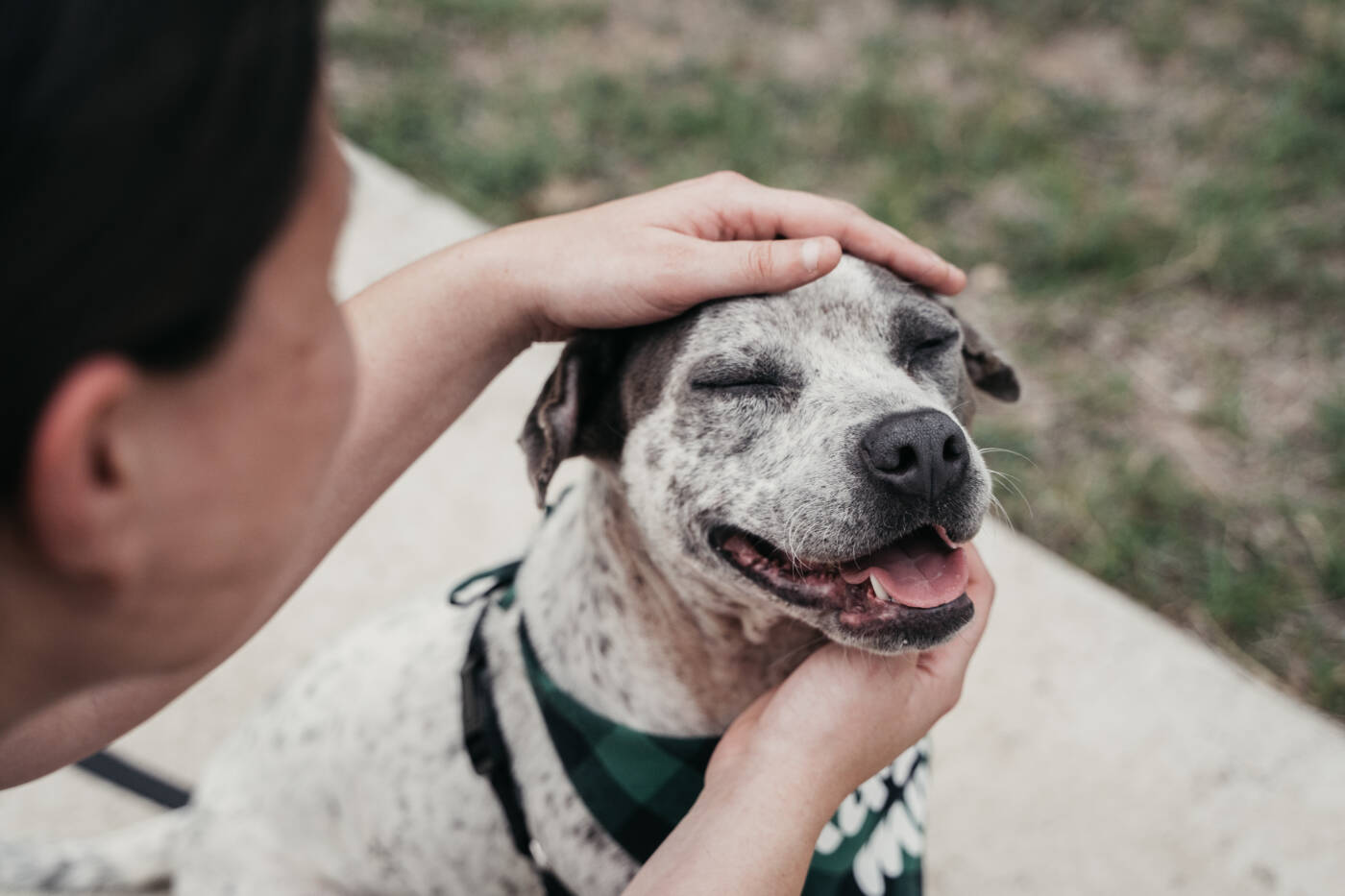
Choosing the Right Rescue or Shelter Dog
Selecting the right rescue dog is a critical step in ensuring a harmonious match between your lifestyle and your new pet.
This decision should be made with care and consideration.
1) Breed, Age, and Energy Levels
Different breeds have varying needs and characteristics. Consider factors like size, energy level, grooming needs, and temperament.
Age also plays a significant role – puppies may require more training and energy, while older dogs might be more settled but could have more health issues.
2) Background of the Dog
Understanding a dog’s history is essential. Was the dog in a shelter or foster care?
Shelter vs. Foster Care:
- Foster Care: Dogs from foster homes often have a clearer history and may have received some home training.
- Shelter: Shelter dogs might have a less detailed history, but they are equally capable of becoming loving pets.
Collect as much background information as possible to ease the transition and facilitate a successful adoption.

3) Temperament and Behavioral History
Assessing a dog’s temperament and past behavior is crucial, especially if you have children or other pets.
Look for a dog whose temperament matches your lifestyle and experience level.
Choosing the right dog involves a mix of heart and head decisions. It’s about finding a companion that complements your lifestyle and whom you can offer a loving, forever home.
Key Takeaways
- Consider breed, age, and energy levels.
- Assess the dog’s background and history.
- Look for temperament compatibility with your lifestyle.
Now let’s dive into the Rescue Dog Adoption Process to understand what you can expect during this rewarding journey!
Rescue Dog Adoption Process: What to expect
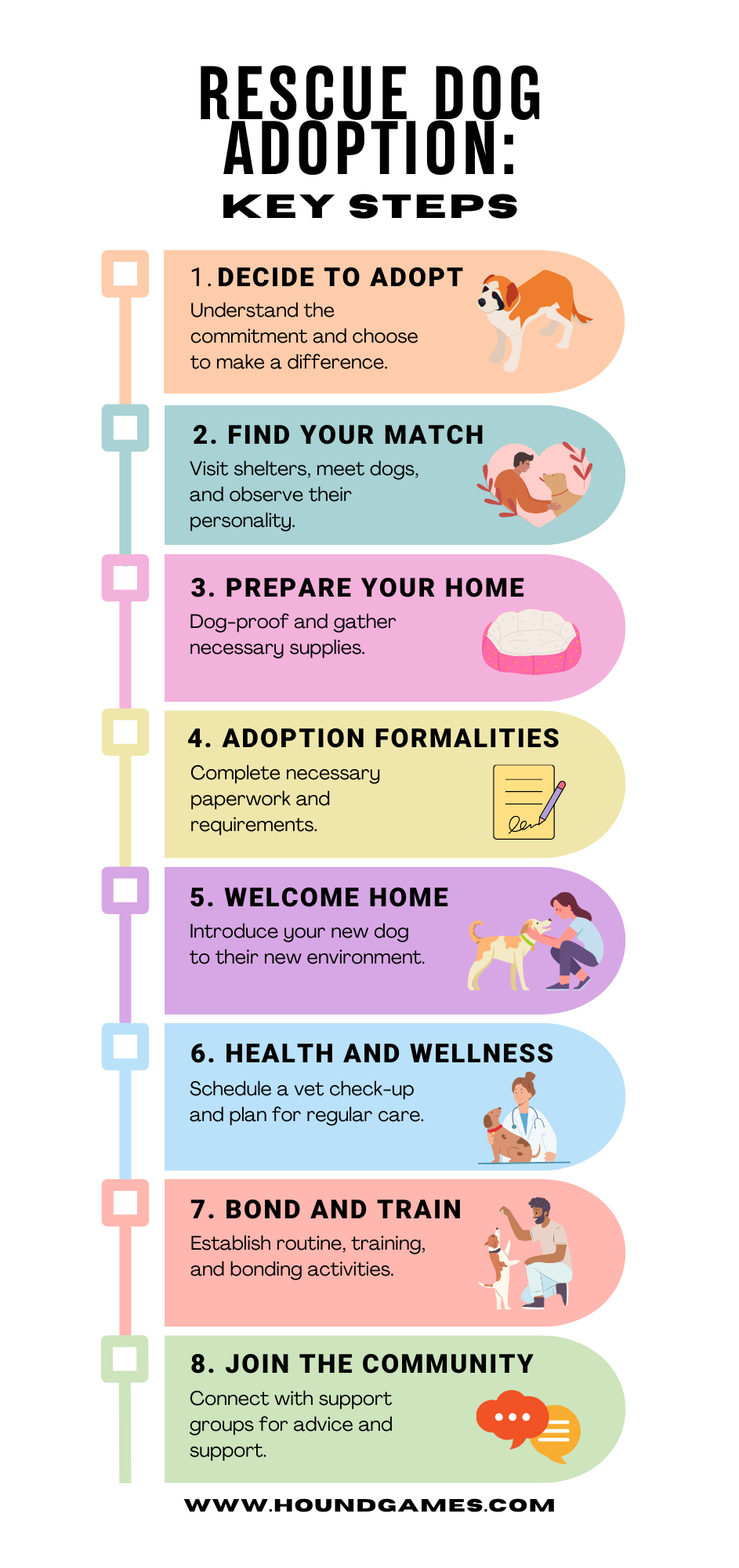
1) Initial Steps
Begin by researching local shelters and rescue organizations.
Many have websites with profiles of available dogs. Select a few dogs that seem like a good match and inquire about the process for meeting them.
2) Visit and Interact
Visiting a shelter or foster home to meet potential dogs is crucial. Spend time interacting with them to gauge their temperament and how they respond to you.
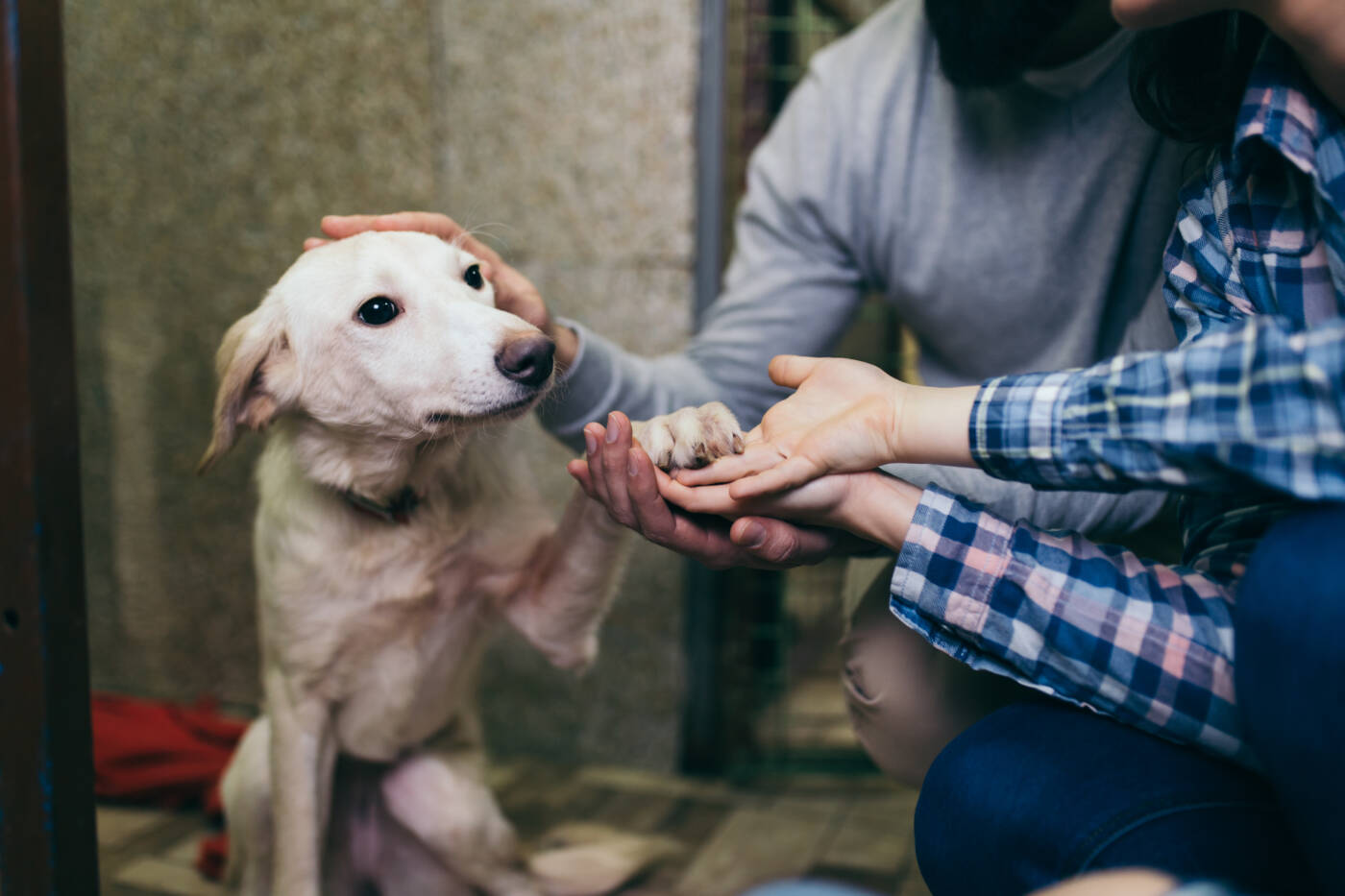
3) Documentation and Legal Requirements
Be prepared to fill out an adoption application, which may include questions about your home environment, lifestyle, and experience with pets.
Shelters and rescues do this to ensure the best match between the dog and the owner.
4) Questions for the Shelter
When visiting a shelter, ask questions about the dog’s health, behavior, history, and any known medical issues. Understanding the dog’s background will help you prepare for its arrival.
5) Adoption Approval and Fees
Once your application is approved, you’ll likely need to pay an adoption fee.
This fee often covers vaccinations, spaying/neutering, and other veterinary care the dog has received.
The fee can differ depending on the rescue shelter.
6) Bringing Your Dog Home
After completing these steps, you’ll be ready to bring your new companion home.
Adopting a rescue dog is a process that requires patience and dedication. Each step brings you closer to adding a loving member to your family.
Key Takeaways
- Research local shelters and rescue organizations.
- Visit potential dogs and interact with them.
- Understand the adoption requirements and fees.
The next sections of this guide will help you prepare for their arrival and ensure a smooth transition.
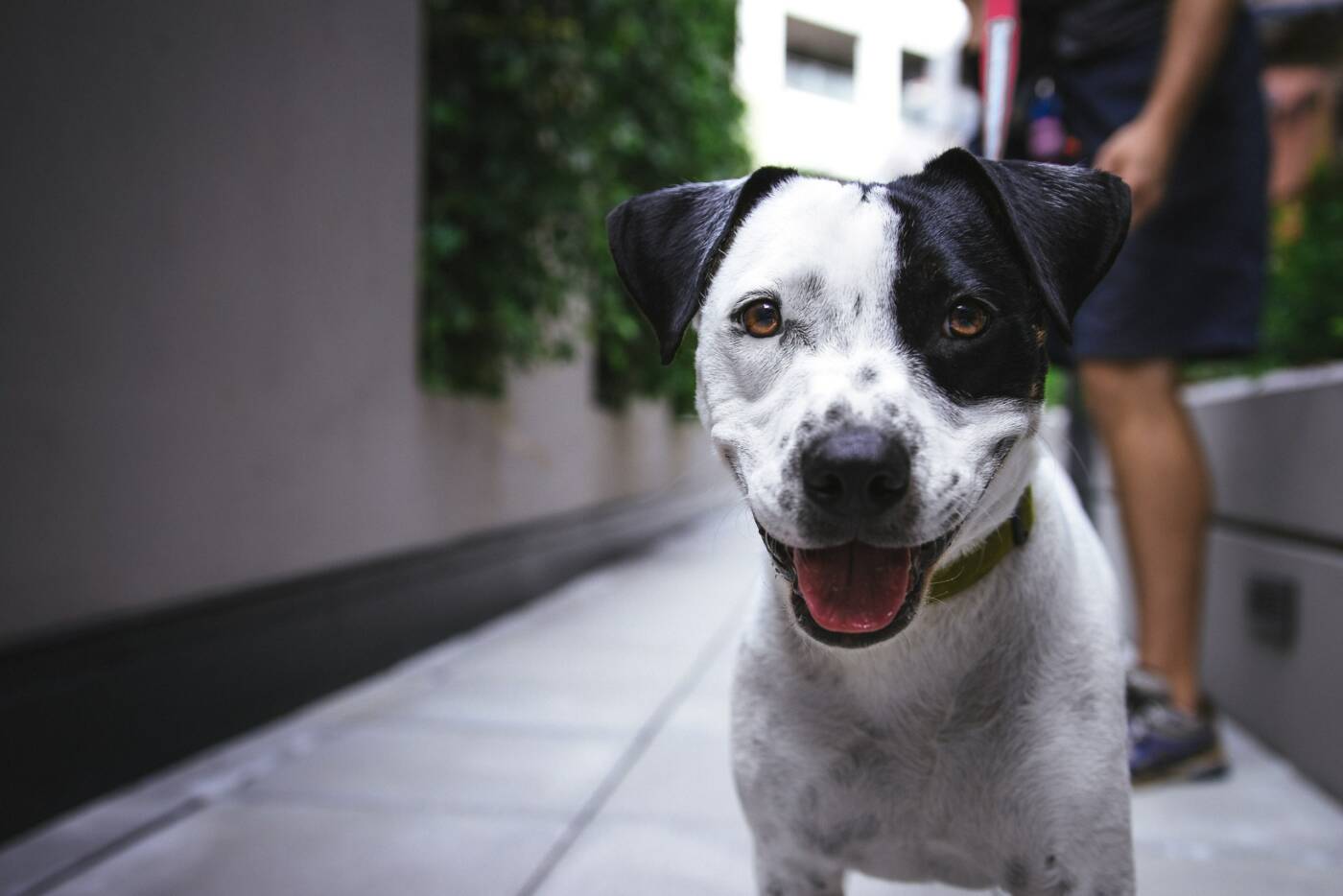
Preparing for Your Dog’s Arrival
Bringing a rescue dog into your home is an exciting time! To ensure a smooth transition, it’s important to prepare your home and gather all the necessary supplies.
We’ve created this PDF Download: The Essential Checklist for New Rescue Dog Owners
It’s for new owners to be best prepared for bringing home their rescue.
1) Dog-Proofing Your Home
Safety is paramount. Remove any hazardous items that a dog might chew or swallow, secure loose wires, and ensure that all harmful substances are out of reach.
If certain areas of your home are off-limits, consider using baby gates.
2) Essential Supplies
Before your dog arrives, stock up on essentials. At a minimum, this includes:
- Crate or bed
- Food and water bowls
- Collar and leash
- Dog food
- Toys
Having these items ready will help your dog feel at home right away.

3) Creating a Welcoming Space
Set up a dedicated space for your dog to sleep and relax. This could be a cozy corner with their bed and some toys.
It’s important to have a quiet, comfortable area for your dog to retreat to, especially in the first few days as they adjust to their new surroundings.
4) Setting the Scene for Success
Remember, the first few days are crucial for setting the tone of your relationship with your new pet. Be patient, calm, and consistent.
Let your dog explore their new surroundings at their own pace, and avoid overwhelming them with too many new experiences at once.
Key Takeaways:
- Dog-proof your home.
- Purchase essential supplies.
- Create a welcoming and comfortable space.
Preparing for your dog’s arrival is about making them feel secure and loved in their new home.
In the next section, we’ll discuss how to handle the first few days after your rescue dog has arrived.
The First Few Days
The first few days after a rescue dog arrives at its new home are crucial in setting the foundation for a long-lasting and loving relationship.
This period requires patience, understanding, and a gentle approach.
We’ve created this helpful PDF Download: Rescue Dog Wellness and Adaptation Journal
Hopefully it can help establish routine and better understand how they are transitioning into your life.
1) Introducing Your Home
Let your dog explore their new environment at their own pace.
It’s important to supervise these initial explorations to ensure their safety and comfort.
Show them where their food, water, and sleeping area are.
2) Establishing a Routine
Dogs thrive on routine! Start establishing a daily schedule for feeding, walks, playtime, and bathroom breaks.
This helps your dog feel secure and understand what to expect each day.
3) Managing Anxiety
It’s normal for rescue dogs to exhibit anxious behavior as they adjust to their new surroundings. They may be hesitant, hide, or even exhibit mild behavioral issues.
Again, be patient and provide a calm, reassuring presence.
4) Setting Boundaries
While it’s tempting to shower your new pet with affection, it’s also important to start setting boundaries and rules from day one. This can help prevent future behavioral issues.
Key Takeaways
- Gradually introduce the dog to their new environment.
- Establish a routine for feeding and walks.
- Be patient and understanding as they adjust – it can take some time.
In the next section, we will delve into the health and wellness needs of your rescue dog.
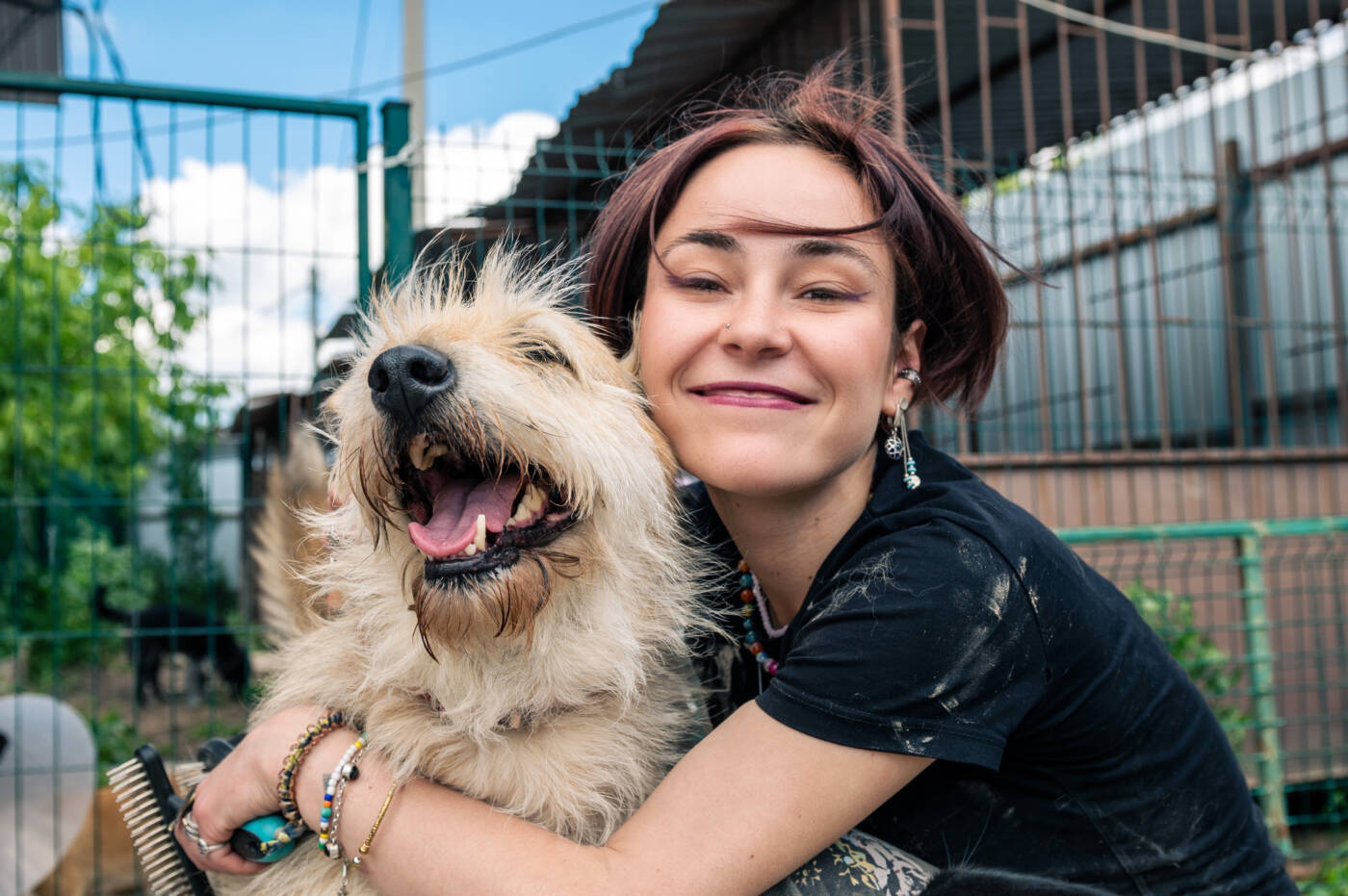
Essential Health and Wellness Tips
Prioritizing the health and wellness of your rescue dog is a vital part of responsible pet ownership. This includes immediate health checks, ongoing care, and understanding the importance of routine medical procedures.
1) Immediate Health Checks
After adoption, schedule a vet appointment to assess your dog’s overall health. This check-up should include a thorough examination, vaccinations if needed, and discussions about any known health issues.
It’s also an opportunity to establish a relationship with your veterinarian!
2) Ongoing Health Care
Regular vet visits are essential for preventative care, including vaccinations, flea and tick prevention, and dental care.
Stay proactive about your dog’s health by monitoring any changes in behavior or appearance, which could indicate health issues.
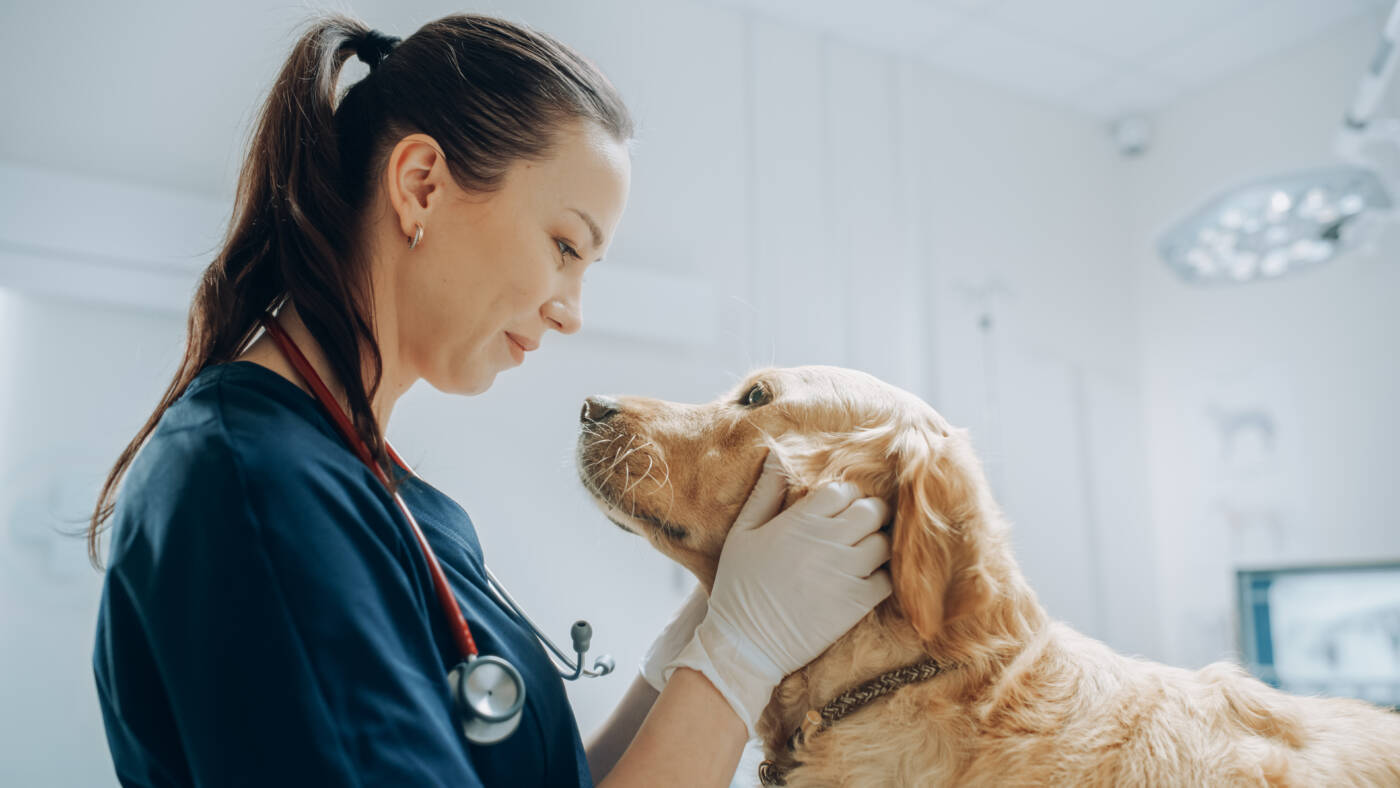
3) Importance of Spaying/Neutering
Spaying or neutering your dog is crucial for their health and wellbeing. It prevents unwanted litters, reduces the risk of certain cancers, and can lead to better behavior.
Discuss the best timing for these procedures with your vet.
4) Nutrition and Exercise
A balanced diet and regular exercise are key to your dog’s physical and mental health.
Choose a high-quality dog food appropriate for their age, size, and activity level, and establish a regular exercise routine.
5) Mental Stimulation
Mental health is as important as physical health.
Provide your dog with toys, engage in training sessions, and offer opportunities for mental stimulation to keep them happy and engaged.
We of course recommend our Hide’n’Treat puzzle toys for mental enrichment.
By prioritizing your dog’s health and wellness, you’re ensuring a long, happy, and healthy life together!
Key Takeaways
- Know the importance of an immediate health check.
- Regular vet visits and vaccinations are essential.
- Research and implement a balanced diet and exercise routine.
Neglecting any of these essential aspects of a rescue dog’s care can have several negative consequences, such as:
- Undetected health problems
- Behavioral impacts
- Nutritional deficiencies
- Decreased quality of life
- And more
Let’s now dive into how proper training and socialization can make a world of difference in your rescue dog’s life.
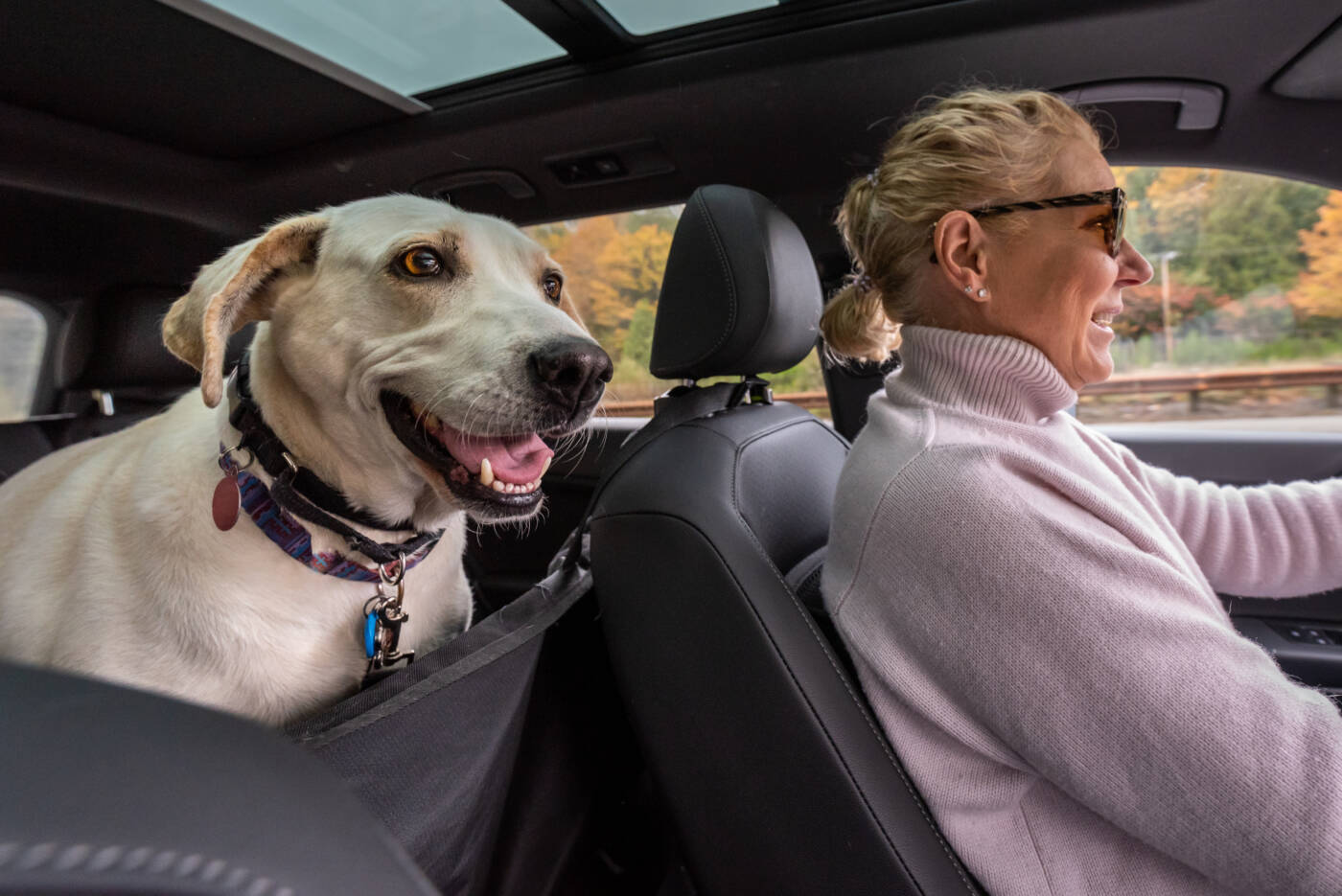
Behavioral Issues and Training
Adopting a rescue dog often means dealing with behavioral challenges unique to dogs that have experienced past traumas, neglect, or inconsistent training.
Understanding and effectively addressing these issues is key to helping your dog adjust and thrive in their new home.
1) Common Behavioral Issues
Rescue dogs may exhibit behaviors such as:
- Anxiety
- Fearfulness
- Aggression
- House training issues
Recognizing these as symptoms of their past experiences, rather than inherent traits, is crucial.
Be patient and consistent in your approach to addressing these behaviors.
2) Basics of Training
Training is essential for any dog, but especially for rescues. Start with basic commands like sit, stay, come, and down.
Use positive reinforcement techniques, such as treats and praise, to encourage good behavior.
Consistency is vital, so ensure all family members follow the same training guidelines.
3) Socialization
Gradually introducing your dog to new people, animals, and environments is important.
This should be done carefully and at a pace that is comfortable for your dog, to avoid overwhelming them.
This post of our might help, Too Late to Socialize? (When is Too Old?)
4) Professional Help
If you encounter persistent behavioral issues, don’t hesitate to seek professional help.
A certified dog trainer or behaviorist can provide targeted guidance and support.
Remember, many behavioral issues can be resolved with time, training, and love.
Key Takeaways:
- Identify and address common behavioral issues.
- Practice the basics of training: teach commands and use positive reinforcement.
- Understand the importance of socialization and if required, seek professional help if needed.
The next section will discuss how to build a strong, lasting bond with your rescue dog.
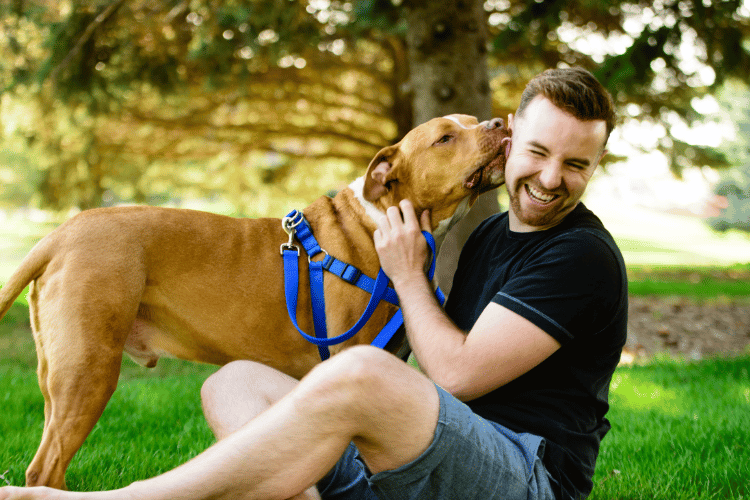
Bonding With a Rescue Dog
Building a bond with your rescue dog is a journey of patience, understanding, and consistent positive interactions.
This connection is fundamental to your dog’s emotional well-being and your mutual relationship.
Tips for Bonding:
- Spend Quality Time Together: Dedicate time each day to interact with your dog. This can include playtime, walks, grooming, or simply relaxing together. These moments are crucial for building trust and affection.
- Learn Their Language: Pay attention to your dog’s body language and vocalizations to understand their feelings and needs. Responding appropriately to their signals strengthens the bond.
- Training as Bonding: Training sessions are not just about obedience; they’re opportunities for bonding. Use these times to reinforce your connection and communication with your dog.
- Consistent Routine: A predictable routine provides a sense of security for your dog. When they know what to expect, they feel more relaxed and open to bonding.
- Patience and Respect: Every dog adjusts at their own pace. Be patient and respect their space and boundaries. Forced interactions can hinder the bonding process.
Key Takeaways:
- Spend quality time daily.
- Understand and respond to their body language.
- Use training sessions as bonding opportunities.
Understanding and Respecting Pace
Remember that bonding doesn’t happen overnight, especially with rescue dogs who may have had difficult pasts.
Celebrate small victories and don’t get discouraged if it takes time.
Role of Positive Reinforcement
Always use positive reinforcement in your interactions.
Reward and praise your dog for desirable behaviors and gently guide them through learning and adapting.
Through patience, understanding, and consistent positive interactions, a strong bond will develop, enriching both your lives.
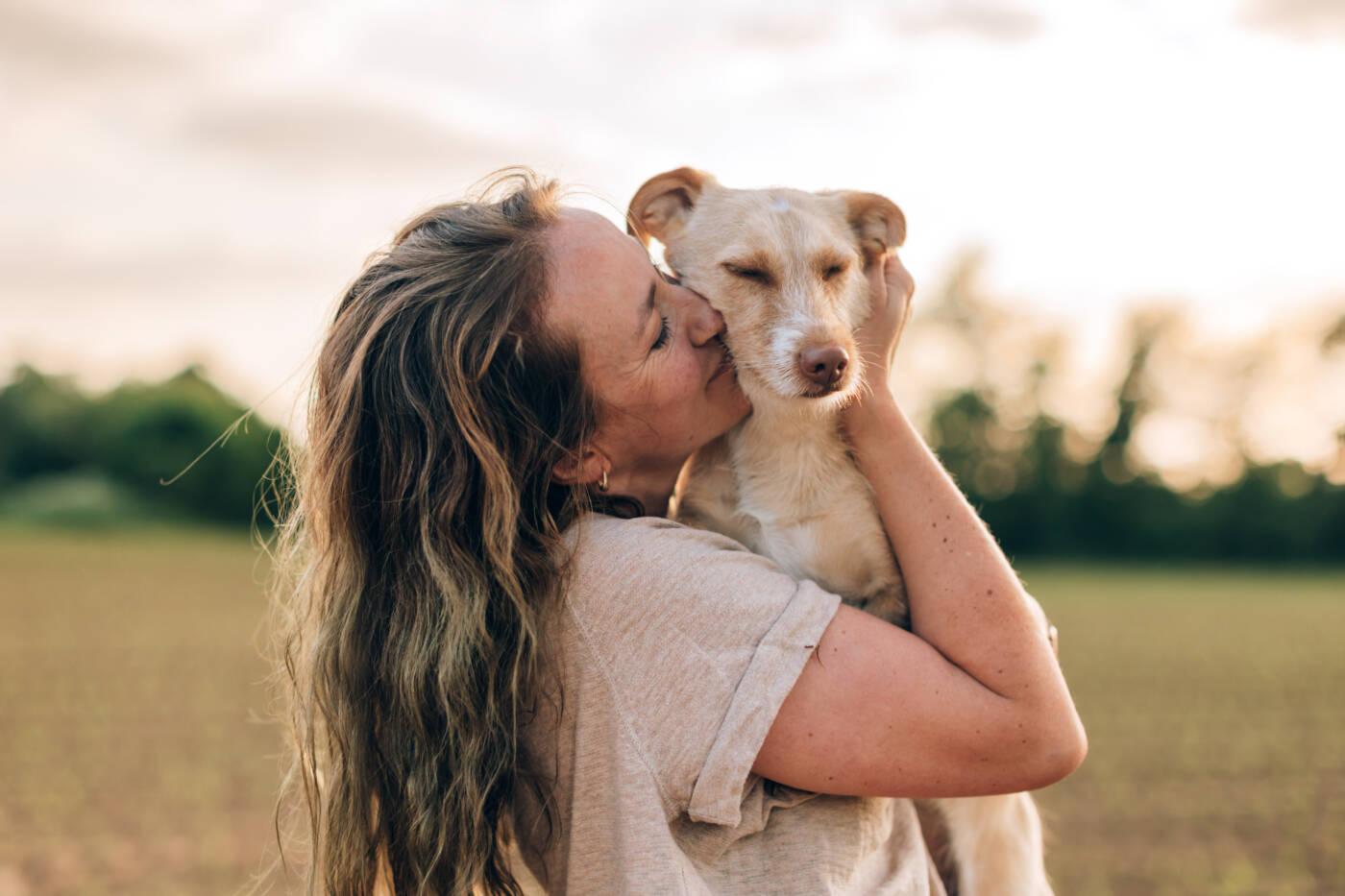
Long-Term Commitment
Adopting a rescue dog is not just a momentary act of kindness; it’s a long-term commitment that comes with its set of challenges and immense rewards.
Understanding this commitment is key to a successful and fulfilling pet ownership experience.
1) Ongoing Responsibilities
Owning a dog means being responsible for its health, well-being, and happiness throughout its life. This includes regular veterinary care, daily exercise, proper nutrition, training, and lots of love and attention!
2) Dealing with Challenges
Like any relationship, you’ll face challenges with your pet. These can range from health issues to behavioral changes as your dog ages.
Being prepared to handle these challenges with patience and understanding is essential.
3) Embracing Changes
As your dog grows and your life changes, you’ll need to adapt your care and routines.
This might mean adjusting exercise routines as they age or finding ways to manage any emerging health issues.
4) Rewards of Rescuing
The rewards of rescuing a dog are immeasurable!
You gain a loyal companion, unconditional love, and the satisfaction of knowing you’ve made a profound difference in an animal’s life.
The journey with a rescue dog is filled with moments of joy, companionship, and personal growth.
Owning a rescue dog is a journey that requires dedication and love.
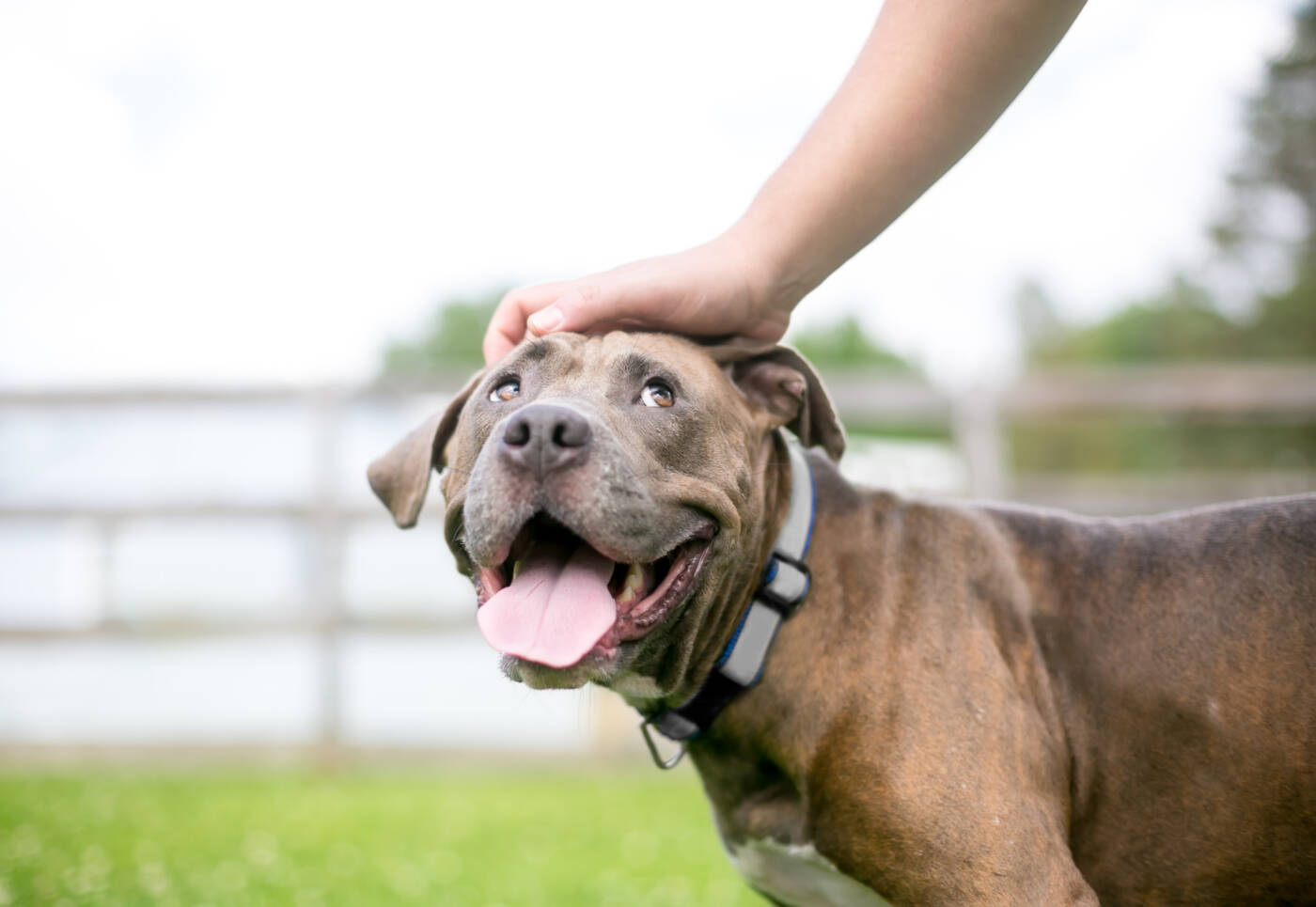
Resources and Support
Having a network of resources and support is invaluable in your journey with a rescue dog.
This section provides a starting point to find assistance, advice, and community support for you and your pet.
1) Local Veterinarians and Trainers
Establish a relationship with a reputable veterinarian for regular check-ups and medical advice.
Additionally, consider working with certified dog trainers, especially if you face behavioral challenges.
2) Support Groups and Forums
Join local or online support groups and forums. These communities can offer advice, share experiences, and provide emotional support.
Here is a list to start with:
https://www.akc.org/akc-rescue-network/
https://www.facebook.com/groups/556348424933246/
https://www.dogforums.com/forums/dog-rescue-forum.23/
https://www.facebook.com/groups/PUPPYFOSTERSUPPORTFORUM/
Engaging with fellow pet owners who understand the unique challenges and joys of owning a rescue dog can be incredibly beneficial!
3) Educational Resources
Seek out books, websites, and articles on dog care, health, and training.
Knowledge is power, and staying informed helps you provide the best care for your pet.
4) Pet Insurance and Financial Planning
Consider pet insurance to help manage veterinary costs. Research different plans and understand what they cover.
Additionally, setting aside a budget for your pet’s health and emergencies is wise.
You might like to read our post, Is Pet Insurance Worth It?
5) Recommended Reads
Remember, you are not alone in this journey!
Utilizing these resources can enhance your experience and provide much-needed support as you navigate the joys and challenges of rescue dog ownership:
- The Other End of the Leash, by Patricia B. McConnell: This book offers insights into the canine mind and behavior, enhancing communication between dogs and their owners
- Before and After Getting Your Puppy, by Dr. Ian Dunbar: A guide on puppy training and care, focusing on positive training methods and socialization
- Dog Owner’s Home Veterinary Handbook, by Debra M. Eldredge, Liisa D. Carlson, Delbert G. Carlson, and James M. Giffin: A comprehensive resource for addressing health concerns and providing medical care for dogs
Now let’s conclude our guide and inspire you to embrace the rewarding journey of rescue dog adoption!
The Rewarding Path Ahead
As we conclude this comprehensive guide to adopting a rescue dog, it’s important to reflect on the journey you’re about to embark upon.
Rescue dog adoption is not just about bringing a new pet into your home; it’s a commitment to changing a life — both yours and your dog’s.
By choosing to adopt, you’re taking a stand for responsible pet ownership and making a difference in the fight against pet homelessness.
Your decision to adopt a rescue dog sets a powerful example for others and contributes positively to the animal welfare community.
1) The Impact of Adoption
Adopting a rescue dog can transform their life, offering them a second chance at happiness and security. But the impact doesn’t stop there! The love, loyalty, and joy that a rescue dog brings into your home are immeasurable.
2) Share Your Success Story
We encourage you to share your adoption story with others. Your experience can inspire others to adopt and spread awareness about the rewards of rescuing a pet.
3) Stay Connected
Stay engaged with the rescue community. Whether it’s through sharing updates, volunteering, or supporting animal welfare causes, your ongoing involvement can make a significant difference.
Key Takeaways:
- Transform lives through rescue dog adoption.
- Share and inspire others with your story – you can make a difference to more than to one rescue!
- Stay engaged and support the rescue community.
Adopting a rescue dog is a journey filled with challenges, learning experiences, and, most importantly, unconditional love.
As you embark on this rewarding adventure, remember the profound impact you are making.
You are giving a deserving animal a loving home and gaining a loyal friend for life.
And if you do all these things and save the life of a dog and give them your love, you are doing God’s work, and I commend you.


